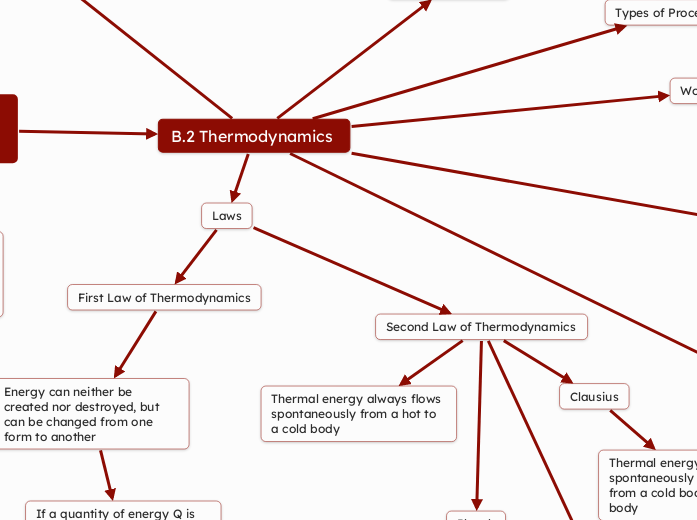realizată de Jacob Shi 8 luni în urmă
183
Engineering Physics Option

realizată de Jacob Shi 8 luni în urmă
183

Mai multe ca acesta
r is distance from force applied to the centre of rotation (point)
This can be considered any point, meaning torque will be at equilibrium when considering at any point
Torque is zero if it goes through the axis of rotation
The area under a torque-time graph is equal to the change in angular momentum
Sum of the mass of all the particles in an object multiplied by their distance to the axis squared
Rotational analog of mass
The work done by a thermodynamic cycle is equal to the area enclosed by the shape formed by the cycle on a pV graph
Isothermal expansion, Adaiabtic expansion, Isothermal compression, adiabatic compression
No heat engine operating between two reservoirs can be more efficient than a Carnot engine operating between the same reservoirs
The efficiency of a cycle is equal to the ratio between the useful work done and the energy put into the cycle
ncarnot = 1 - Tcold/Thot
Change in S = change in Q/T
No thermal energy is transferred between the gas and its surroundings (Q = 0) Process must be rapid and the gas must be well-insulated
Volume remains constant, no work is done by or on the gas (W = 0)
Pressure remains constant
Temperature (and internal energy) remain constant (ΔU = 0) System must be in contact with a large reservoir (something outside the system that either provides or absorbs heat) and the process must be slow
In a gas cylinder, W = pressure*A * displacement (x)
W = P * change in V
Kelvin
A consequence of this is that the entire universe will eventually be filled with degraded (useless) heat
In a cyclic system, it is impossible to completely convert heat to work
Clausius
Thermal energy cannot be spontaneously transferred from a cold body to a hot body
Planck
Any process which appears to locally decrease the entropy of a system (a fridge makes air cool) is always accompanied by an increase in entropy elsewhere (the fridge’s coolant pump gets hot)
In an irreversible process, the total entropy of an isolated system increases, and in a reversible process, the total entropy of an isolated system remains unchanged
Thermal energy always flows spontaneously from a hot to a cold body
Energy can neither be created nor destroyed, but can be changed from one form to another
If a quantity of energy Q is supplied to a gas, it can either gain internal energy or do work Q=change in U+W